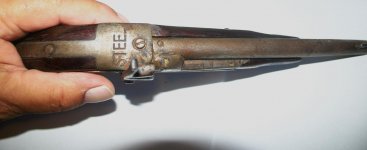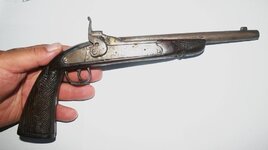packerbacker
Gold Member
Found this pistol in a storage unit. Appears to be a smoothbore, cap and ball pistol of about 30 caliber. No numbers or anything, just "STEE_" on top. Has a very small trigger guard and trigger, possibly a youth model if real. Anyone got an idea? It does have a very strong hammer action on it.








